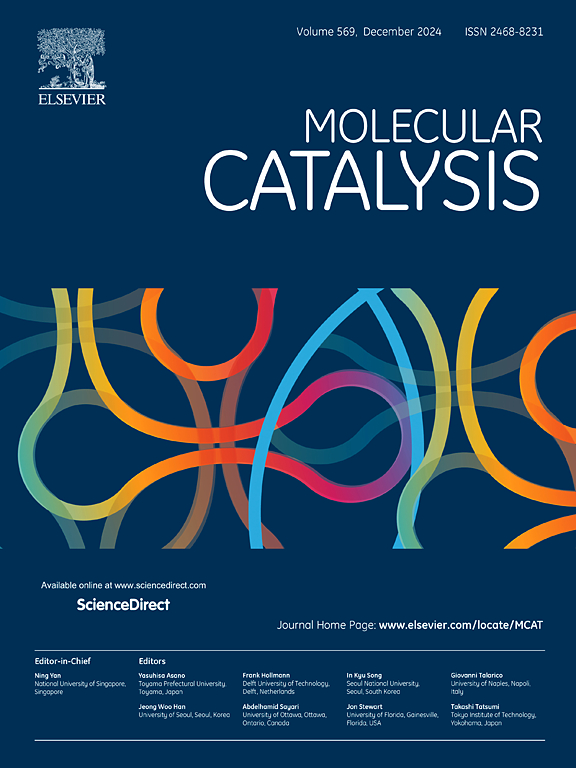Nano UiO-66 and UiO-66-NH2 MOFs as Bifunctional Electrocatalysts for Water-Splitting: A Comparative Study
IF 3.9
2区 化学
Q2 CHEMISTRY, PHYSICAL
引用次数: 0
Abstract
This study focuses on the synthesis and comparative evaluation of nano UiO-66 (U) and UiO-66-NH₂ (U-N) MOFs as bifunctional electrocatalysts for water-splitting. The U and U-N MOFs are synthesized via a convection solvothermal method, and their structural, optical, and electrochemical properties, along with their performance in the Oxygen Evolution Reaction (OER) and Hydrogen Evolution Reaction (HER), are comprehensively characterized. The XRD patterns confirm the high crystallinity of both U and U-N, while FTIR spectra indicate the presence of typical functional groups in these MOFs. The UV-Vis absorbance spectra reveal a red shift in U-N compared to U, signifying a reduced band gap energy due to amino functional groups. TEM images display distinct particle sizes and morphologies with U-N exhibiting agglomerated particles and a narrower size distribution. BET analysis demonstrates the porous nature of both MOFs, with U exhibiting a greater surface area. Electrochemical studies reveal that U-N exhibits superior OER activity, characterized by lower overpotential, and a lower Tafel slope, as well as exceptional stability under prolonged electrochemical conditions. The amine (NH₂) groups in U-N are the primary factor contributing to its enhanced OER performance. Additionally, U-N displays a reduced band gap energy, promoting improved catalytic activity and sustained performance. On the other hand, the U MOF demonstrates promising HER activity, maintaining effective current density for a significant duration, albeit indicating the need for enhancements to ensure prolonged stability. The CV and Nyquist plots further reveal that the U-N MOF possesses a larger electrochemical surface area, higher sensitivity, and enhanced conductivity, attributed to the presence of amino (NH₂) groups, leading to more efficient charge transport within the material. Overall, this comparative study underscores the potential of U-N as a highly efficient electrocatalyst for water-splitting applications, offering valuable insights for the design and development of advanced MOF-based electrocatalysts.

求助全文
约1分钟内获得全文
求助全文
来源期刊

Molecular Catalysis
Chemical Engineering-Process Chemistry and Technology
CiteScore
6.90
自引率
10.90%
发文量
700
审稿时长
40 days
期刊介绍:
Molecular Catalysis publishes full papers that are original, rigorous, and scholarly contributions examining the molecular and atomic aspects of catalytic activation and reaction mechanisms. The fields covered are:
Heterogeneous catalysis including immobilized molecular catalysts
Homogeneous catalysis including organocatalysis, organometallic catalysis and biocatalysis
Photo- and electrochemistry
Theoretical aspects of catalysis analyzed by computational methods
 求助内容:
求助内容: 应助结果提醒方式:
应助结果提醒方式:


